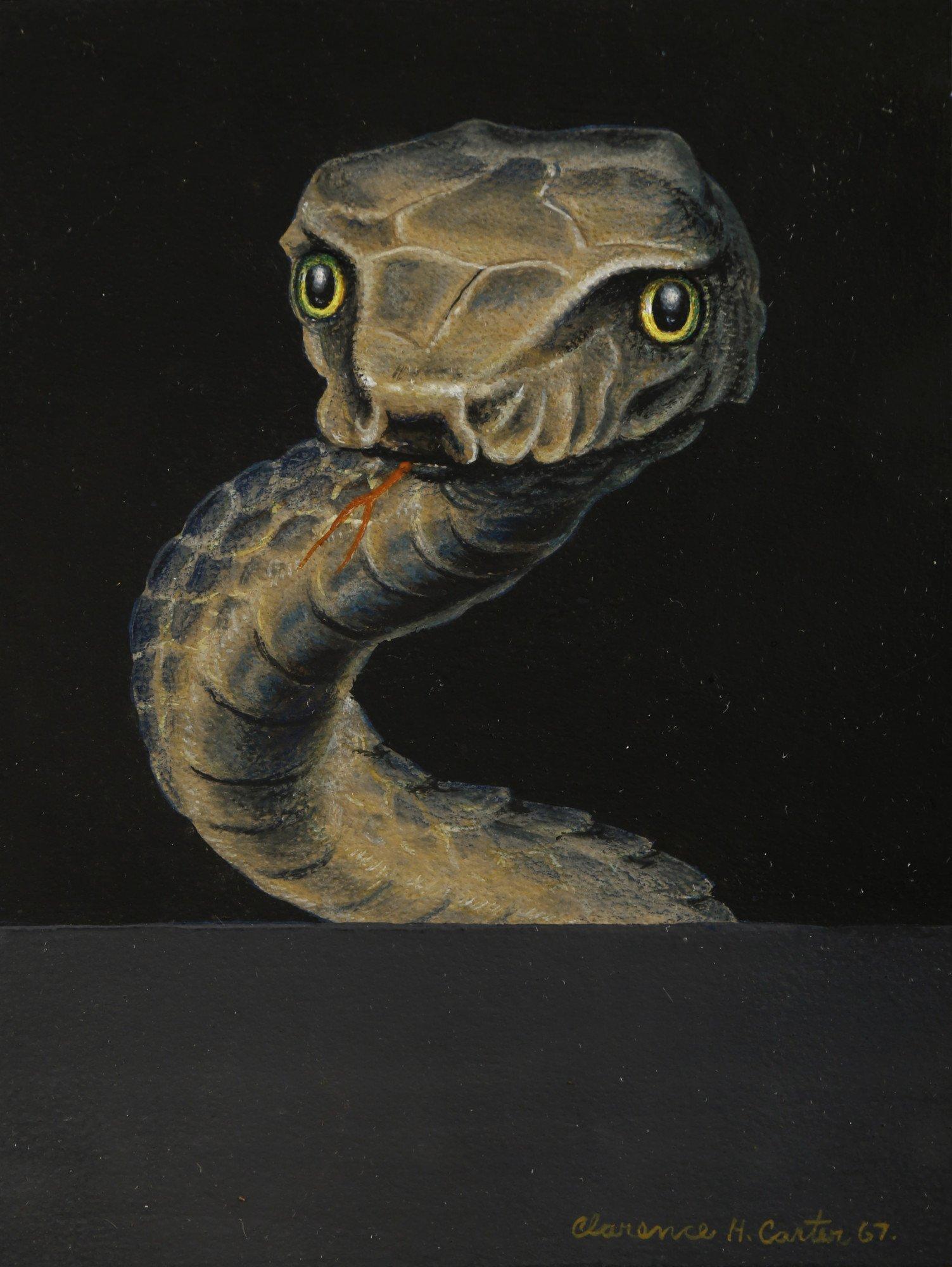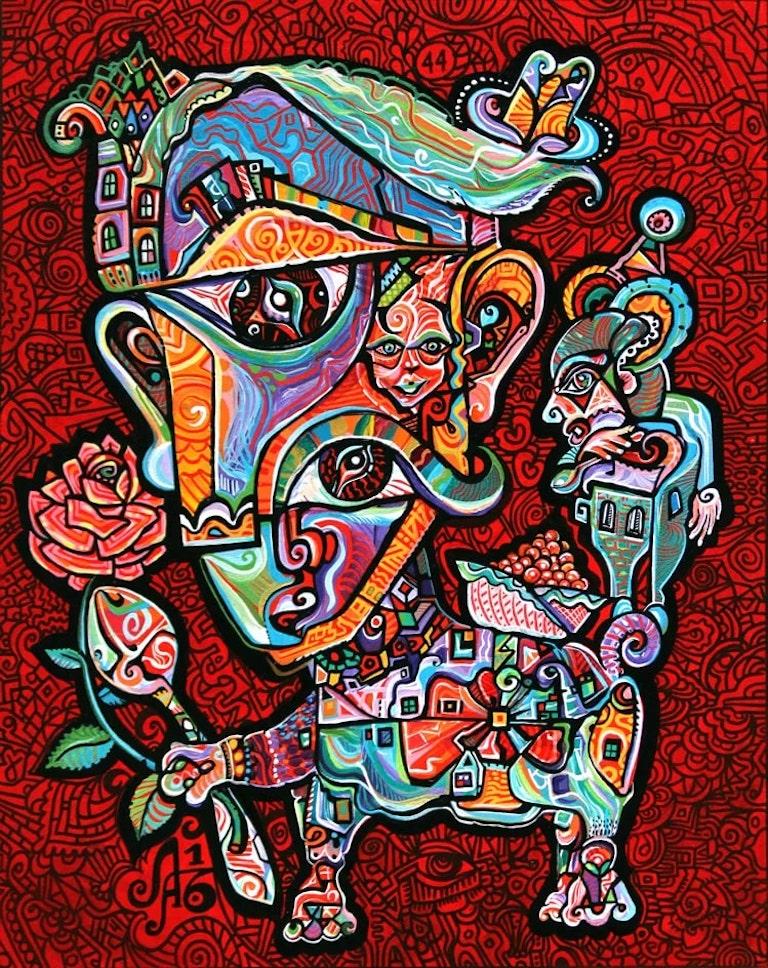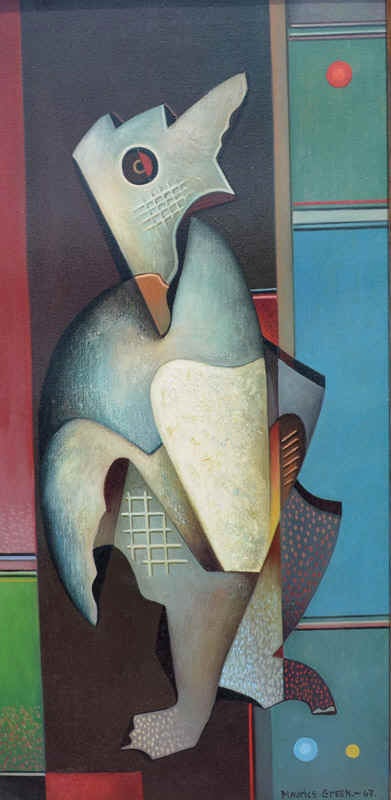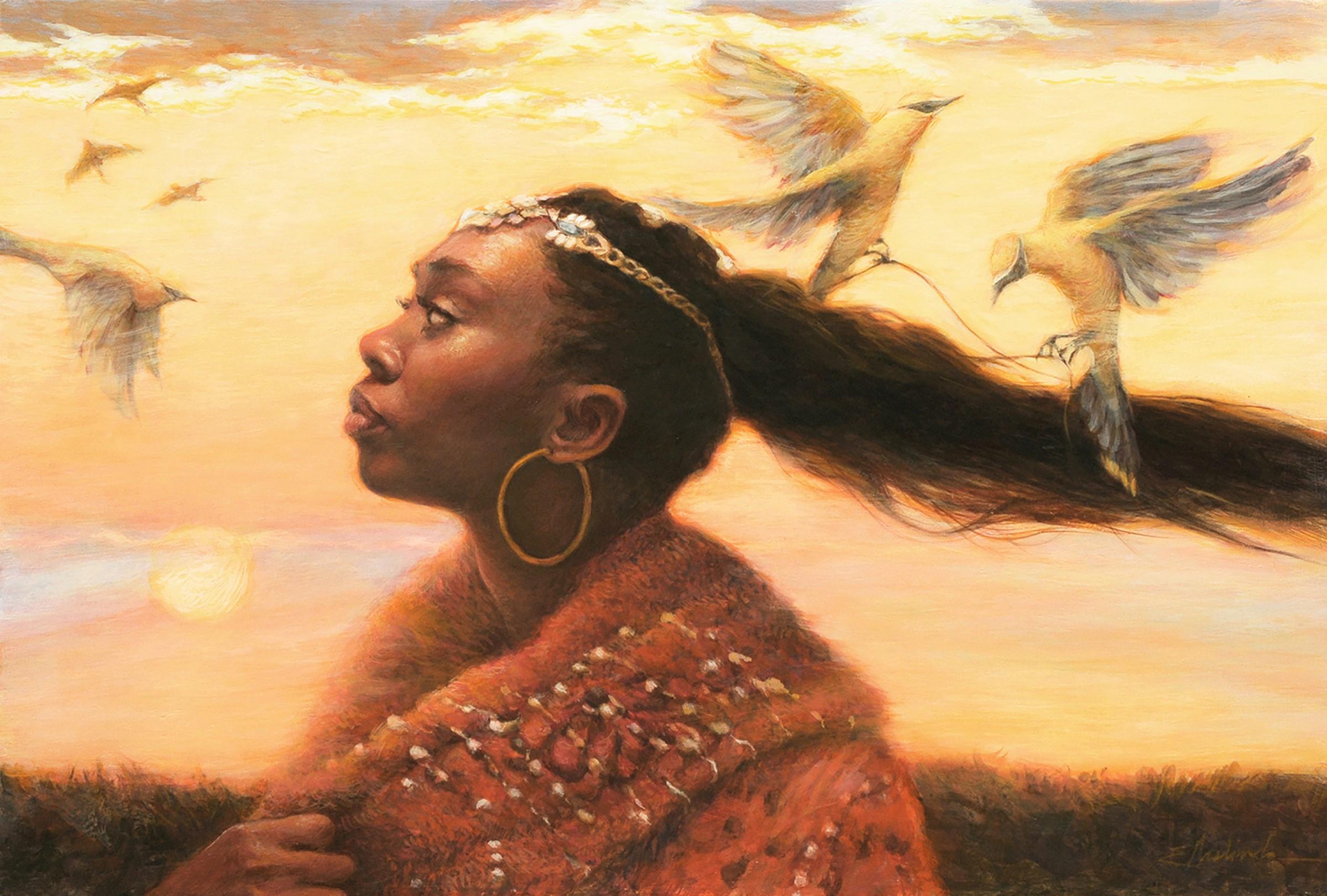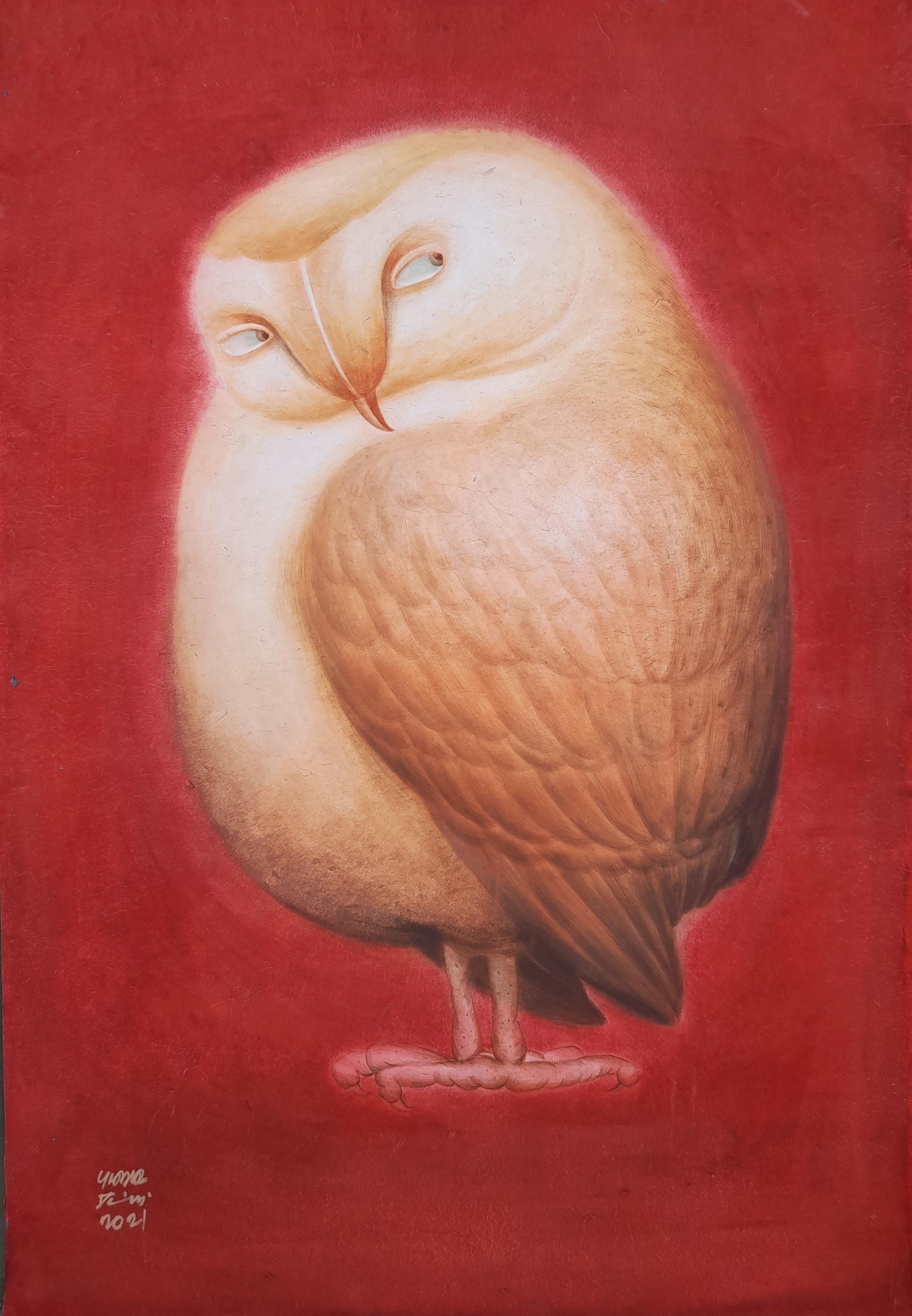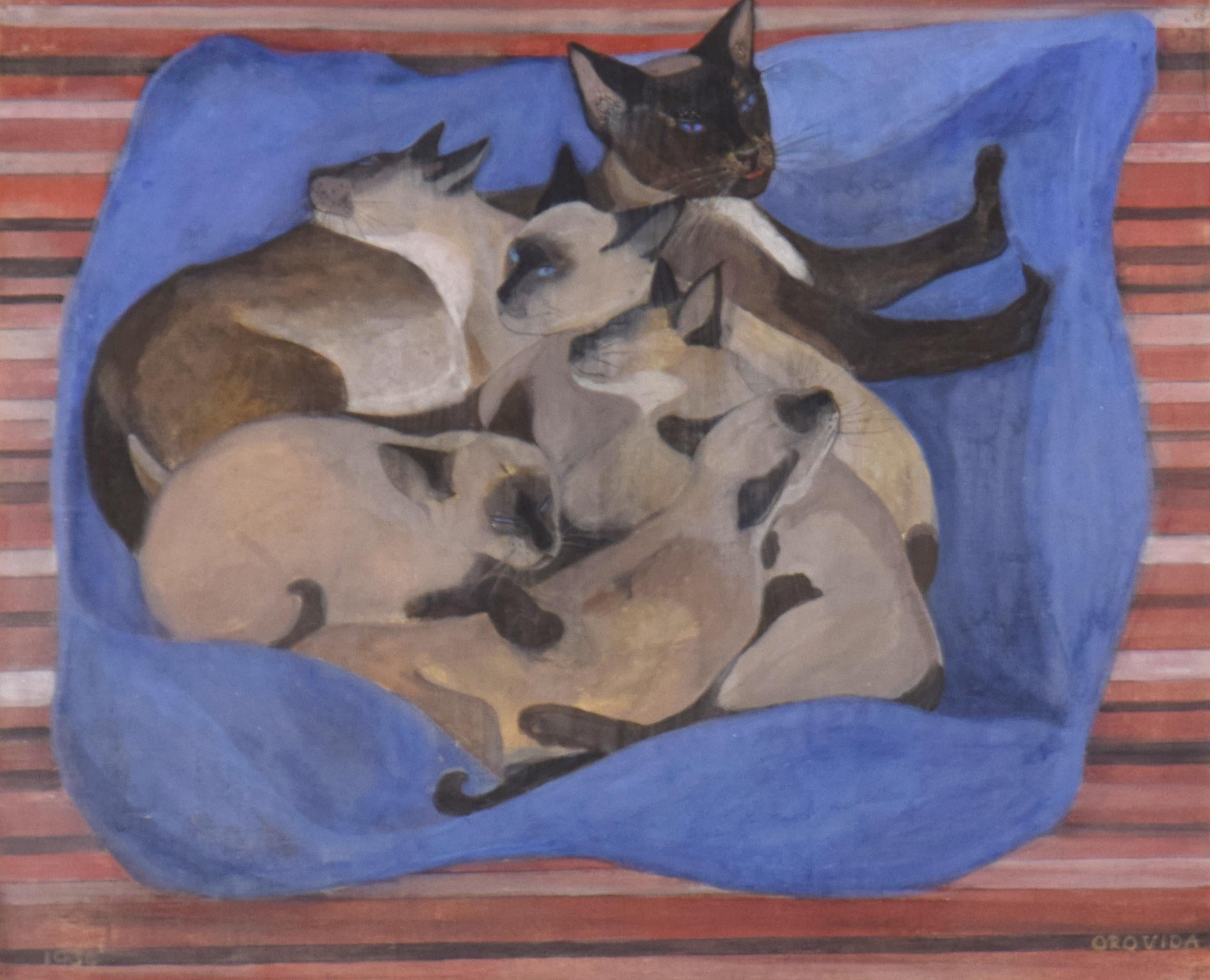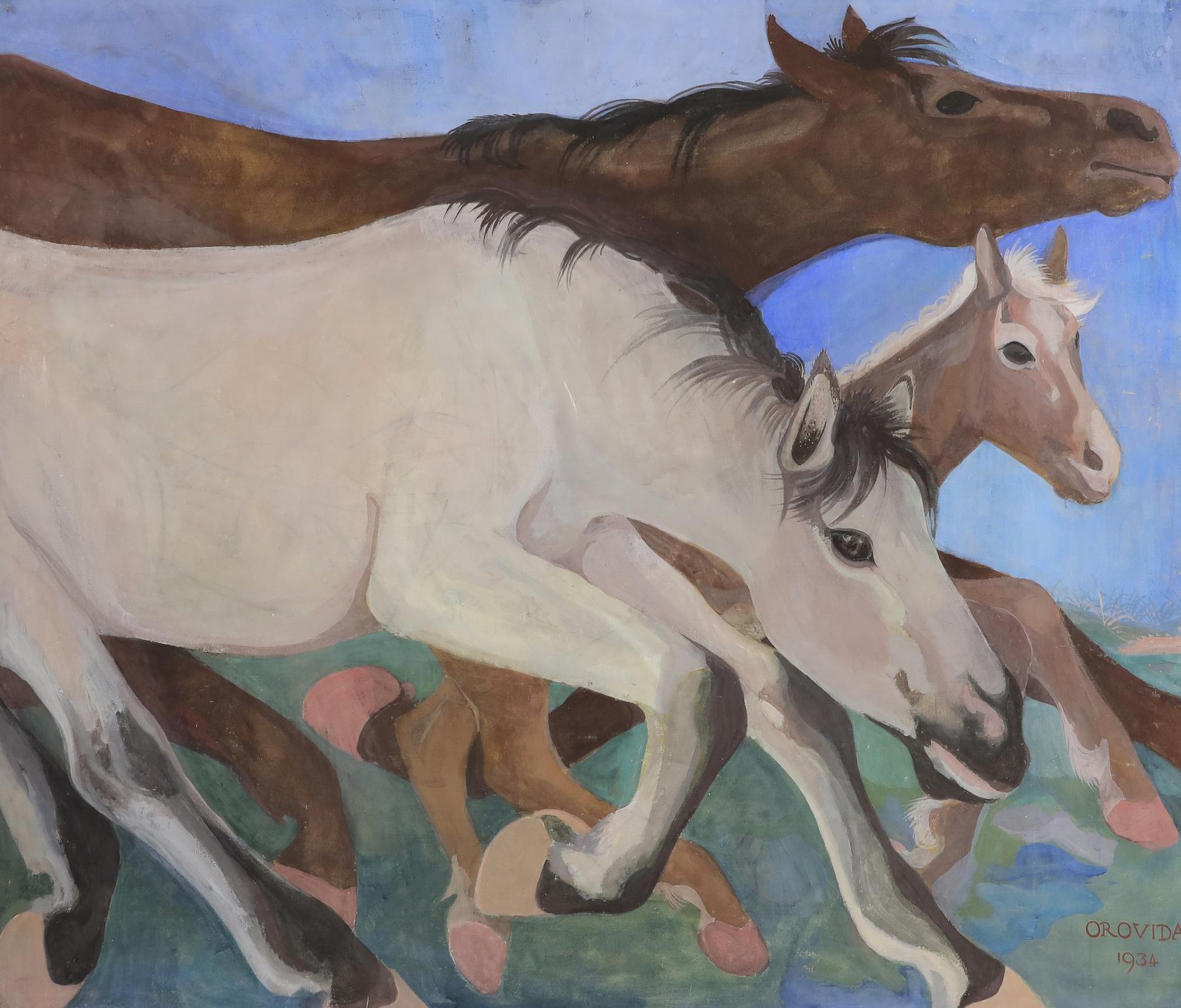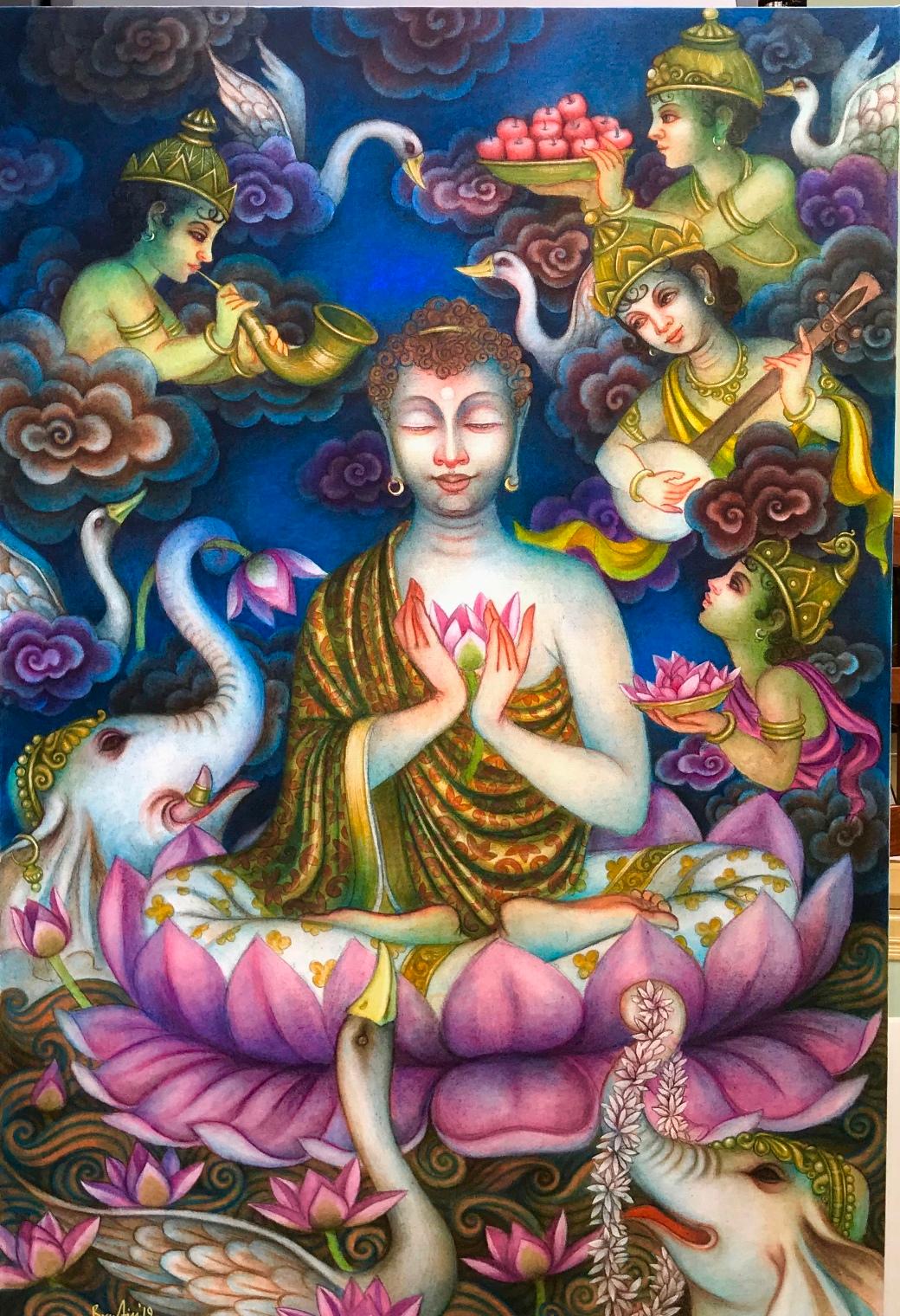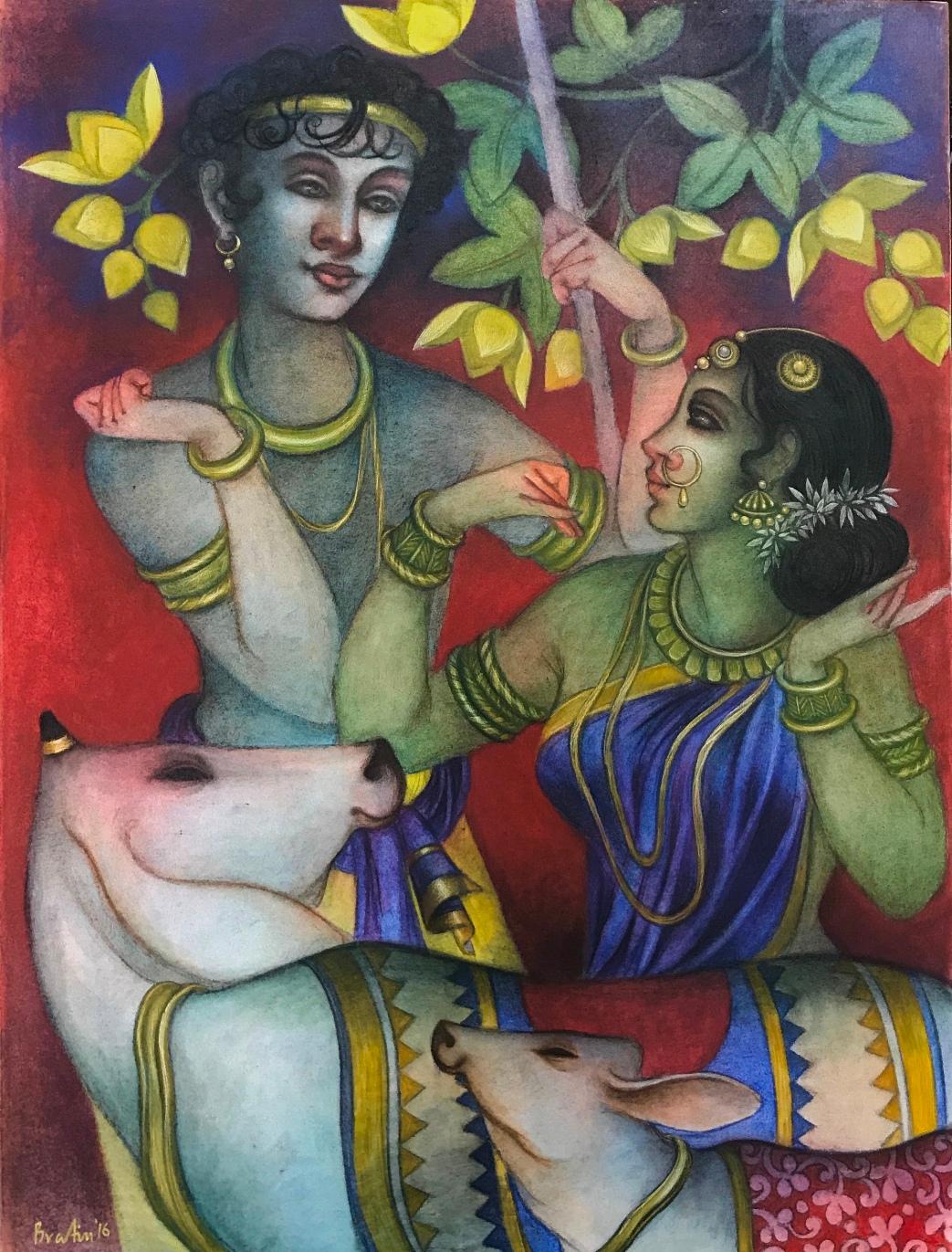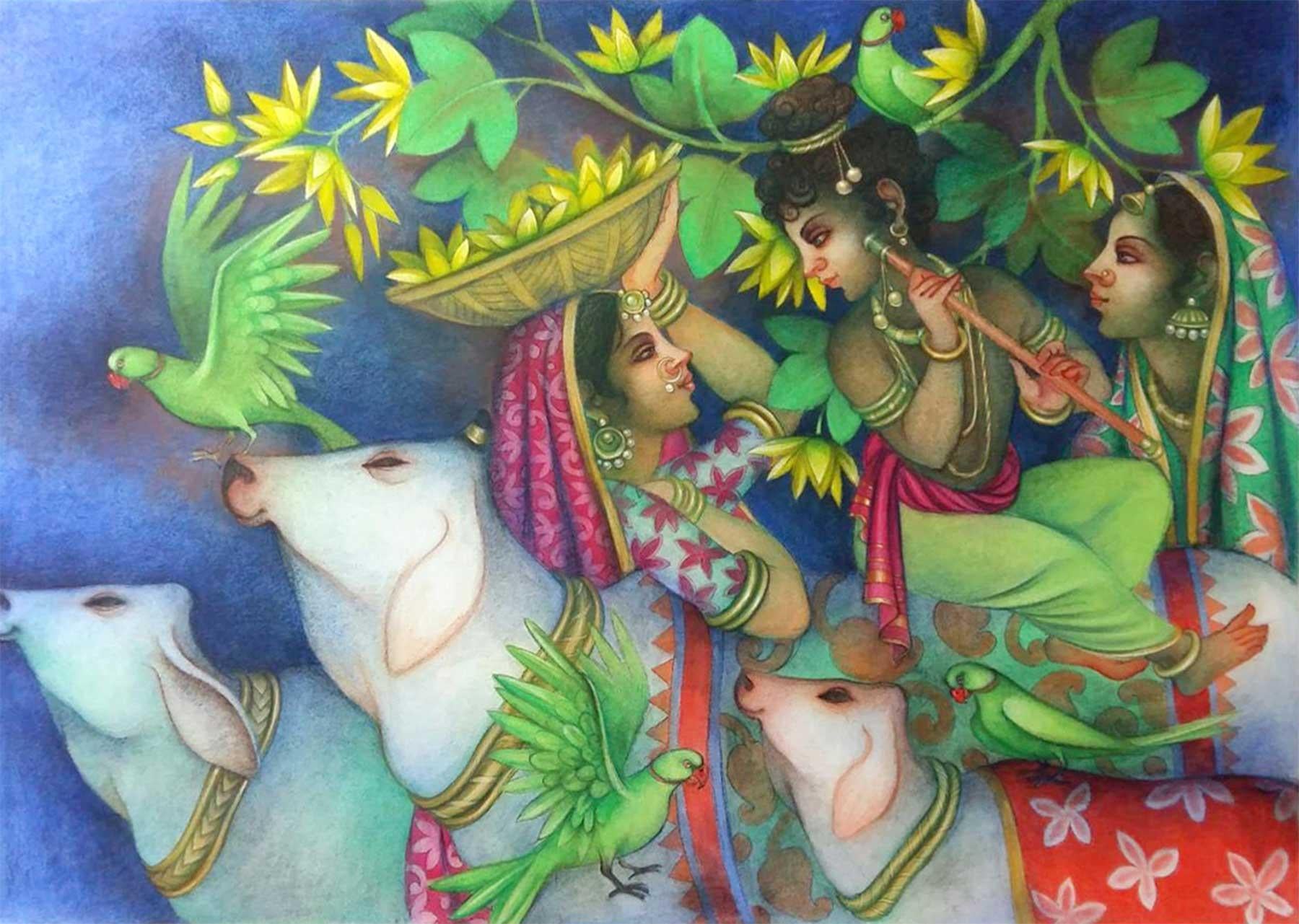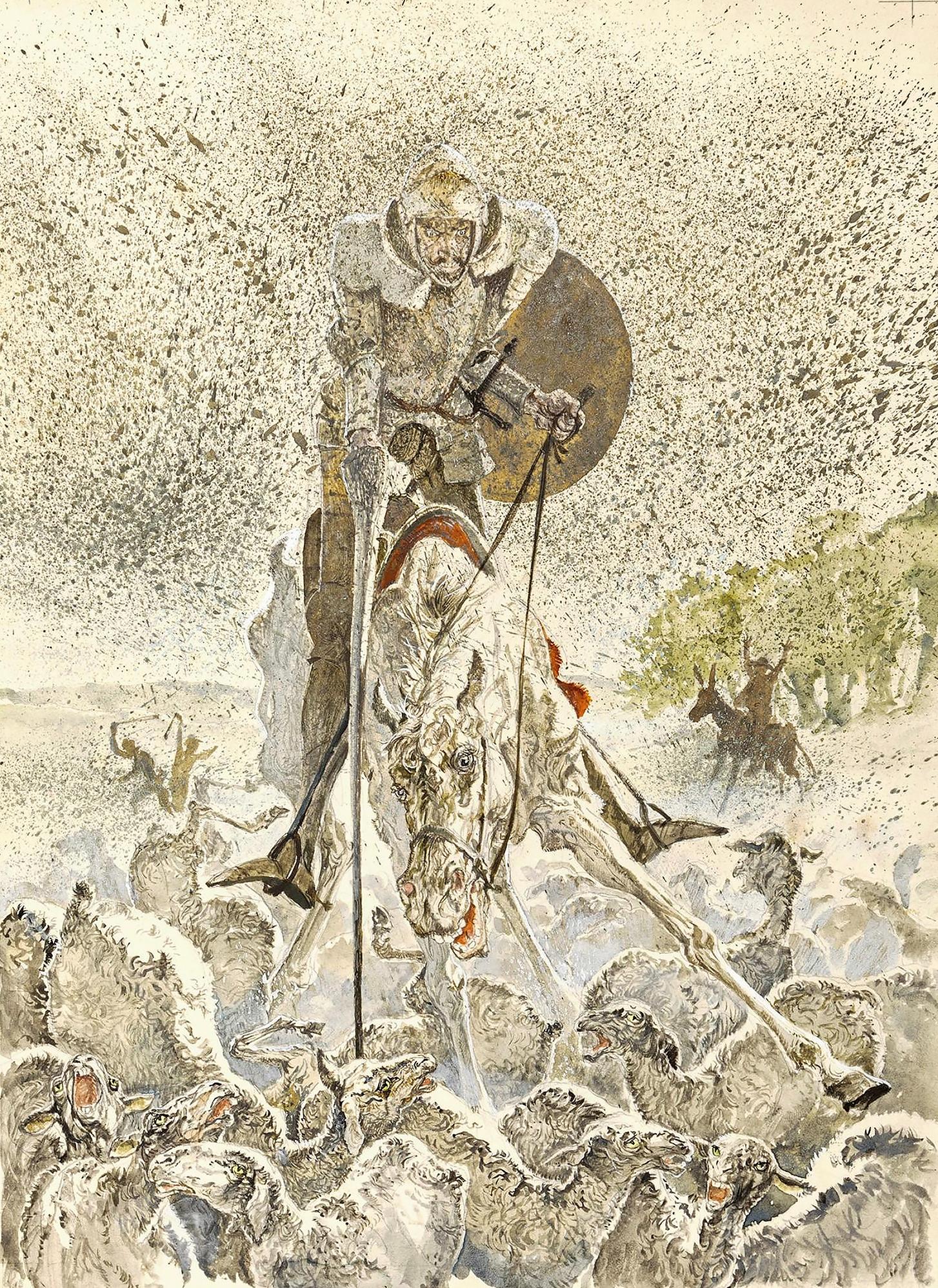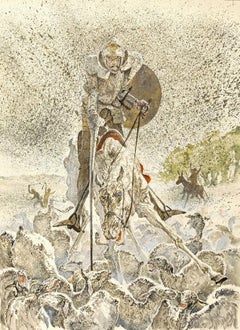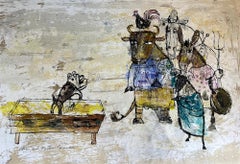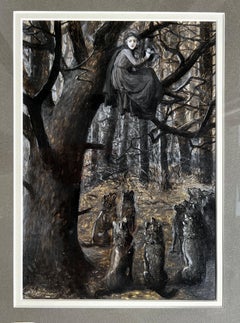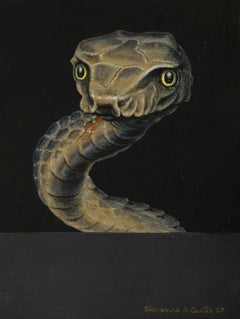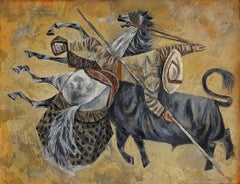
BullFight Picador Horsemen Matador. Bullfighting scene where horse is impaled
Want more images or videos?
Request additional images or videos from the seller
1 of 7
Fletcher MartinBullFight Picador Horsemen Matador. Bullfighting scene where horse is impaled 1956
1956
About the Item
- Creator:Fletcher Martin (1904-1979, American)
- Creation Year:1956
- Dimensions:Height: 36 in (91.44 cm)Width: 48 in (121.92 cm)
- Medium:
- Movement & Style:
- Period:
- Condition:some slight paint loss on frame otherwise very fresh and wonderfull looking and looks wonderful in person.
- Gallery Location:Miami, FL
- Reference Number:1stDibs: LU38535398111
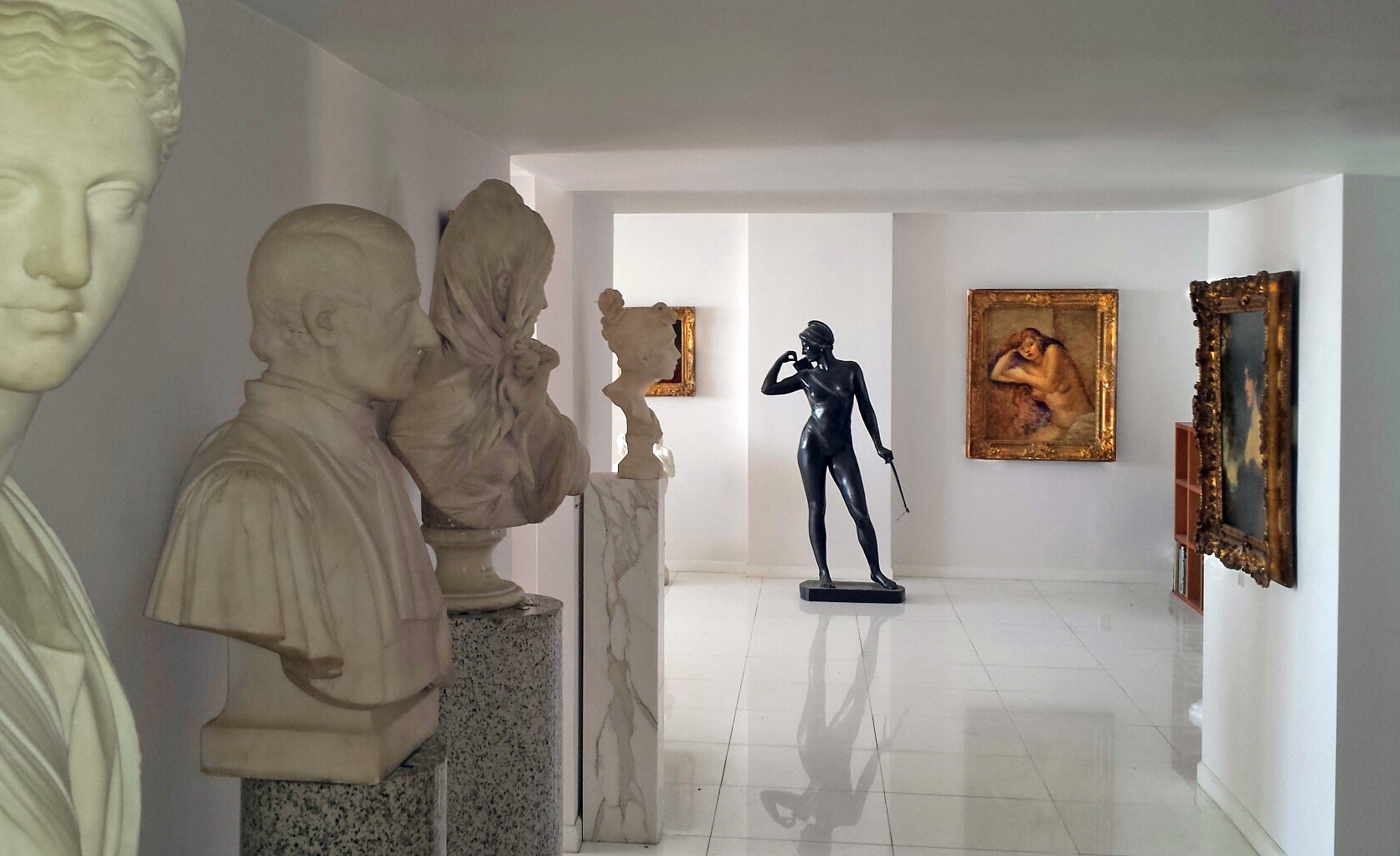
About the Seller
4.9
Gold Seller
These expertly vetted sellers are highly rated and consistently exceed customer expectations.
Established in 2005
1stDibs seller since 2016
102 sales on 1stDibs
Typical response time: 1 hour
More From This SellerView All
- Don Quixote - Nobleman on Horse with Sheep - Action PaintingLocated in Miami, FLItalian illustrator Gianni Benvenuti depicts a dramatic scene from the epic Spanish novel by Miguel de Cervantes. With unrivaled skill, Benvenuti captures a peak moment of drama when...Category
1960s Abstract Expressionist Figurative Paintings
MaterialsTempera, Pencil
- Bulldog Barks at Bull, Chicken, Goat, Horse and Donkey, Naive artLocated in Miami, FLAlice RoseProvensen and Martin Provensen were an American couple who illustrated more than 40 children's books together, 19 of which they also wrote and edited According to Alice, "we were a true collaboration. Martin and I really were one artist. The Provensens were a runner-up for the 1982 Caldecott Medal as illustrators of A Visit to William Blake's Inn by Nancy Willard (who won the companion Newbery Medal). Two years later they won the Caldecott for The Glorious Flight, the story of aviator Louis...Category
1960s Outsider Art Animal Paintings
MaterialsGouache
- Hungry Wolves Hunt a Women Up a Tree at Night - Gay Female IllustratorLocated in Miami, FLTrailblazing Gay Female illustrator of the Golden Age Ida Waugh paints and powerful narrative of a woman cowering in a tree while a hungry pack of wolves wait beneath her for dinner feast. Signed lower left. Framed under glass, Ida Waugh (October 24, 1846 – January 25, 1919) was an American illustrator of children's literature who often collaborated with her lifelong companion, Amy Ella Blanchard. Personal life Ida Waugh was born in Philadelphia, Pennsylvania on October 24, 1846, the daughter of painter Samuel B. Waugh and his first wife, Sarah Mendenhall, therefore she was half-sister of painter Frederick Judd Waugh. Her step-mother was Mary Eliza Young Waugh, a miniaturist. She attended Académie Julian and Académie Delécluse in Paris, studying with Georges Callot, Paul-Louis Delance, and Jean-Joseph Benjamin-Constant.In 1868 she attended the first "Ladies Life Class" at Pennsylvania Academy of the Fine Arts; in the same class there were Emily Sartain and Catherine Ann Drinker. Career Ida Waugh collaborated with her partner Amy Ella Blanchard in publishing children's books, Waugh as illustrator and Blanchard as writer. Waugh also published books on her own Other than a children's book illustrator, Waugh was an award-winning painter. In 1869 she exhibited at the Pennsylvania Academy of the Fine Arts two works, "The Bargain" and a portrait bust of Carl Gaertner. Her self-portrait and another painting, "Little Cosette" (1870), are in the permanent collection of the Woodmere Art Museum, Philadelphia, both donated by Mrs. John S. Haug in 1961.They were part of the exhibition "Women and Biography" in 2014, including: Elizabeth Shippen Green, Violet Oakley, Edith Emerson, Anne Minich, Catherine Mulligan, Mitzi Melnicoff, Alice Kent Stoddard, Aubrey Levinthal, Martha Armstrong...Category
1980s American Realist Figurative Paintings
MaterialsOil, Illustration Board
- Man Running with Dog - No Thorough Fare, Golden Age of IllustrationBy William Henry Dethlef KoernerLocated in Miami, FLSigned lower right. Titled verso on stretcher, Artist to the current owner's Aunt. unframedCategory
1930s American Impressionist Figurative Paintings
MaterialsOil
- Horses, Chicken, Ducks, Rooster and Pigs - Children's Book -Female IllustratorLocated in Miami, FLCover illustration for mid-century children's book publisher Merril Publishers. Signed lower right. Unframed. Retta Scott or Retta Worcester was (February 23, 1916 – August 26, 1990) was an pioneering Female Illustrator / American artist. She was the first woman to receive screen credit as an animator at the Walt Disney Animation Studios. Scott worked on storyboards to develop scenes of Bambi, his mother, and the film’s hunting dogs, on which she spent weeks to develop them into “vicious, snarling, really mean beasts.” Male artists in the company were stunned who initially assumed that only a man could create drawings with such intensity and technical skill. Her sketches caught the eye of Disney, so when the film went into production, she was assigned to animate scenes of hunting dogs chasing Faline. She worked under the film's supervising director, David D. Hand,and was tutored by Disney animator Eric Larson. This was a significant coup for the young woman, since at the 1930s-era Disney studio, women were considered only for routine tasks: "Ink and paint art was a laborious part of the animation process, and was solely the domain of women..." Her promotion to animator was in part thanks to the success of herself and other women such as Bianca Majolie, Sylvia Holland, and Mary Blair as storyboard artists. Even after receiving a promotion to animator, she and her animations continued being under appreciated in the industry. Though the most recognized Walt Disney female artist is Mary Blair, it is Retta Scott who opened up the doors for women in the animation industry. She became the first woman to receive screen credit as an animator. By the spring of 1941, Scott was also considered a "specialist in animal sketches." Scott helped produce Fantasia and Dumbo, as well as an adaptation of The Wind in the Willows that was later cancelled. She also made an appearance in The Reluctant Dragon...Category
1950s Feminist Animal Paintings
MaterialsGouache
- Art Deco Horses and Nude FiguresBy Bela KadarLocated in Miami, FLThis work is an exceptional example of Kádár's mature Cubist style. It's effortlessly designed around a complex composition of nude men and women tending to horses in a surreal landscape with Greek columns, friezes and marshmello clouds set against a rich blue saturated sky. Kádár was a Hungarian painter influenced by Der Blaue Reiter...Category
1930s Art Deco Figurative Paintings
MaterialsGouache
You May Also Like
- Over and Above Surprise (Serpent), 1960s snake painting, Cleveland SchoolBy Clarence Holbrook CarterLocated in Beachwood, OHClarence Holbrook Carter (American, 1904-2000) Over and Above Surprise (Serpent), 1967 Casein on board Signed lower right 7.75 x 5.5 inches Clarence Holbrook Carter achieved a lev...Category
1960s American Modern Figurative Paintings
MaterialsCasein
- Cubist Figurative Painting, "Taste of Caviar"By Alexander ArshanskyLocated in San Diego, CAThis is a one of a kind original cubist painting by San Diego artist, Alexander Arshansky. Its dimensions are 16"x20"x1.5". It is unframed. A Certi...Category
2010s Cubist Figurative Paintings
MaterialsAcrylic
- The PenguinBy Maurice GreenLocated in West Hollywood, CAPremiering for the first time in three decades, the original paintings of American artist Maurice Green. Born in 1908 in Latvia, Maurice Green studied with prominent artists of the day before settling in Los Angeles in the 1930’s. The artist continued his art education and began exhibiting throughout galleries in Southern California. Due to his intense fascination with the cubist avant garde movement, into cubist imagery which became the trademark style of painting for the remainder of his life. This is the first presentation of the paintings of Maurice Green since his death in 1993. “The Penguin...Category
1970s Cubist Animal Paintings
Price Upon Request - Tomorrow is Another Day Egg Tempera on Panel Gilded Frame Salmagundi ClubBy E. Melinda MorrisonLocated in Houston, TXTomorrow is another Day by E. Melinda Morrison is 24 x 30, egg tempera on ACM panel. Framed in a black 3-1/2" gilded frame. Tomorrow is Another Day received honorable mention at t...Category
2010s American Impressionist Figurative Paintings
MaterialsEgg Tempera, Panel
- The owlLocated in Singapore, SG"The owl, patron bird of Goddess Athena, has a history that goes beyond the common association with wisdom and knowledge. In ancient Egypt, owls were known to...Category
21st Century and Contemporary Contemporary Animal Paintings
MaterialsTempera, Handmade Paper
$1,090 - Siamese Cat with Kittens by Orovida Pissarro - Egg tempura paintingBy Orovida PissarroLocated in London, GBSiamese Cat with Kittens by Orovida Pissarro (1893-1968) Egg tempera on linen 39 x 48 cm (15³/₈ x 18⁷/₈ inches) Signed lower right Orovida and dated lower left 1934 Provenance J Ankri, 8th October 1967 Literature K L Erickson, Orovida Pissarro: Painter and Print-Maker with A Catalogue Raisonné of Paintings, (doctoral thesis), Oxford, 1992, Appendices, no. 51, p. 56 (illustrated) Exhibition London, The Leicester Galleries, Paintings by Orovida, February 1935, no. 6 Women’s International Art Club, 20th February - 13th March 1937, no. 273 London, Redfern Gallery, Ten Years of Work by Orovida, 5th-28th May 1938, no. 7 London, The Royal Society of British Artists, Summer Exhibition, 1947, no. 281 (possibly the etching) London, O’Hana Gallery, Paintings, Drawings and Coloured Etchings: Orovida, 3rd-18th October 1957, no. 13 Artist biography Orovida Camille Pissarro, Lucien and Esther Pissarro’s only child, was the first woman in the Pissarro family as well as the first of her generation to become an artist. Born in Epping, England in 1893, she lived and worked predominantly in London where she became a prominent member of several British arts clubs and societies. She first learned to paint in the Impressionist style of her father, but after a brief period of formal study with Walter Sickert in 1913 she renounced formal art schooling. Throughout her career, Orovida always remained outside of any mainstream British art movements. Much to Lucien's disappointment she soon turned away from naturalistic painting and developed her own unusual style combining elements of Japanese, Chinese, Persian and Indian art. Her rejection of Impressionism, which for the Pissarro family had become a way of life, together with the simultaneous decision to drop her famous last name and simply use Orovida as a ‘nom de peintre’, reflected a deep desire for independence and distance from the weight of the family legacy. Orovida's most distinctive and notable works were produced from the period of 1919 to 1939 using her own homemade egg tempera applied in thin, delicate washes to silk, linen or paper and sometimes embellished with brocade borders. These elegant and richly decorative works generally depict Eastern, Asian and African subjects, such as Mongolian horse...Category
1930s Modern Animal Paintings
MaterialsLinen, Egg Tempera
